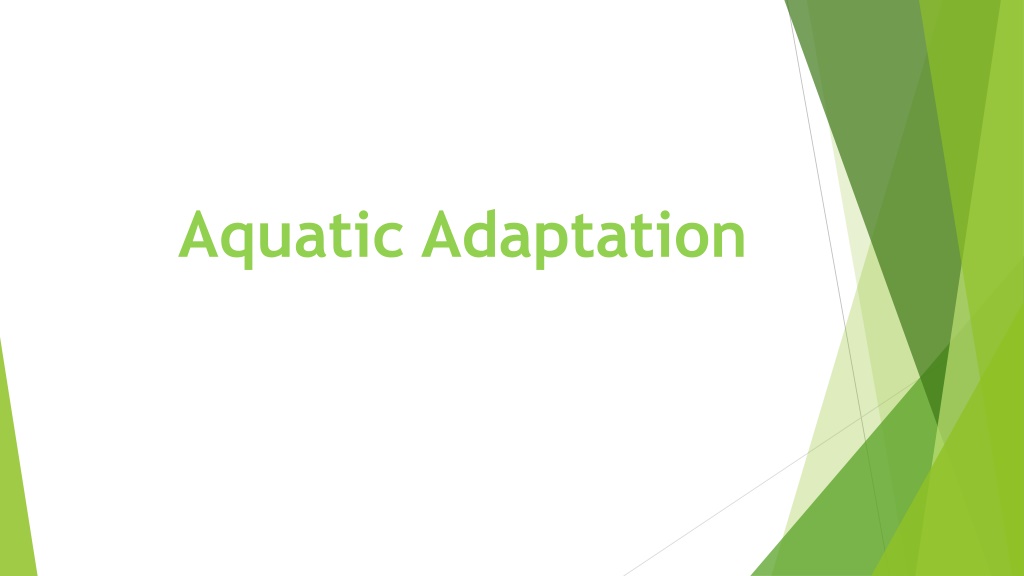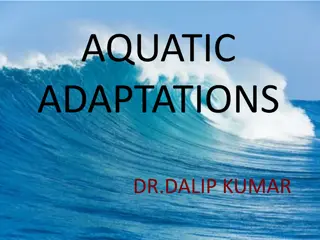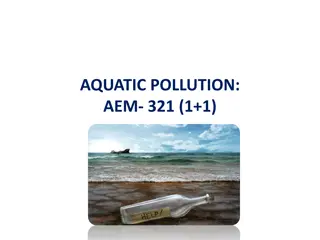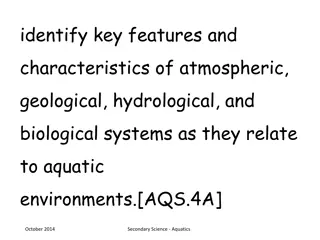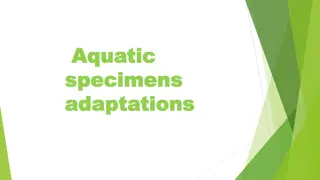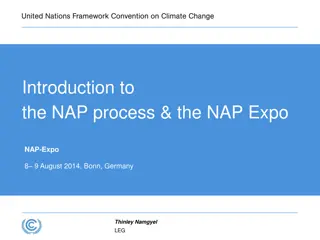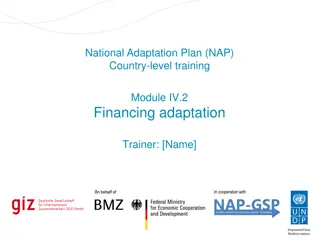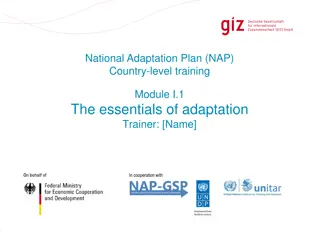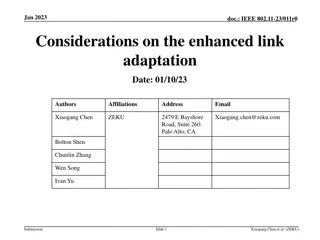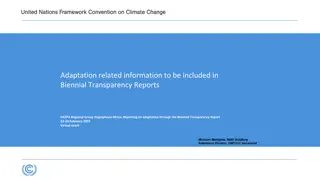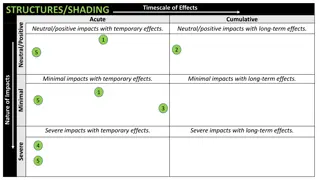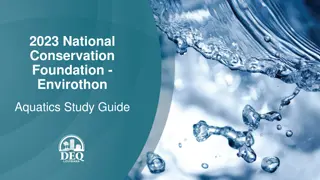Understanding Aquatic Adaptation in Animals
Aquatic adaptation refers to the changes in an animal's body organization to thrive in a water habitat. Vertebrates have evolved to lead partial or total aquatic lives, showcasing various adaptations. Water as a habitat offers a homogenous medium, stable conditions, and rich food resources. Aquatic animals require streamlined bodies for swimming and mechanisms for osmoregulation. They can be categorized as primary or secondary aquatic animals based on their evolutionary origins. Primary aquatic animals like fish have always lived in water, while secondary aquatic animals, such as aquatic reptiles, birds, and mammals, transitioned from land to water habitats. Amphibians represent a transitional stage between these two categories.
Download Presentation

Please find below an Image/Link to download the presentation.
The content on the website is provided AS IS for your information and personal use only. It may not be sold, licensed, or shared on other websites without obtaining consent from the author. Download presentation by click this link. If you encounter any issues during the download, it is possible that the publisher has removed the file from their server.
E N D
Presentation Transcript
What is aquatic adaptation? What is aquatic adaptation? Changes of the body organization to exploit water as habitat are known as aquatic adaptation. All classes of vertebrates have their representatives leading to partial or total aquatic life.
Characters of Water as Habitat: Water is a homogenous medium for animals. Compa- ratively, as a medium it is heavy in concentration than air. Stable gaseous and osmotic concentration in a specific region. Temperature fluctuation is minimum for a particular region. Water bodies generally have very rich food resources.
Characters of an Aquatic Animal An aquatic animal should have the ability to swim to overcome the resistance of the surrounding medium. Therefore, it should have a streamlined body with an organ or ability to float. The animal should also have to overcome the problem of osmoregulation.
Types of animals acc to their origin of adaptions There are two types of animals living in the present day water, which have undergone aquatic adaptation. According to their origin, they are primary and secondary aquatic animals.
Primary Aquatic Animals Those animals, whose ancestors and themselves are living in the water from the very beginning of their evolution, are called primary aquatic animals. In other words, primary aquatic animals never had a terrestrial ancestry. They exhibit perfect aquatic adaptations. All fishes are primary aquatic animals.
Secondary Aquatic Animals Those animals whose ancestors were lung breathing land animals, migrated to the water for some reason and ultimately got adapted to live in aquatic habitat, are called secondary aquatic animals.
Some of them live partially while others live totally in the water. All aquatic reptiles, aves and mammals are representatives of secondary aquatic animals. Amphibians are in a transitional form between primary and secondary aquatic life.
